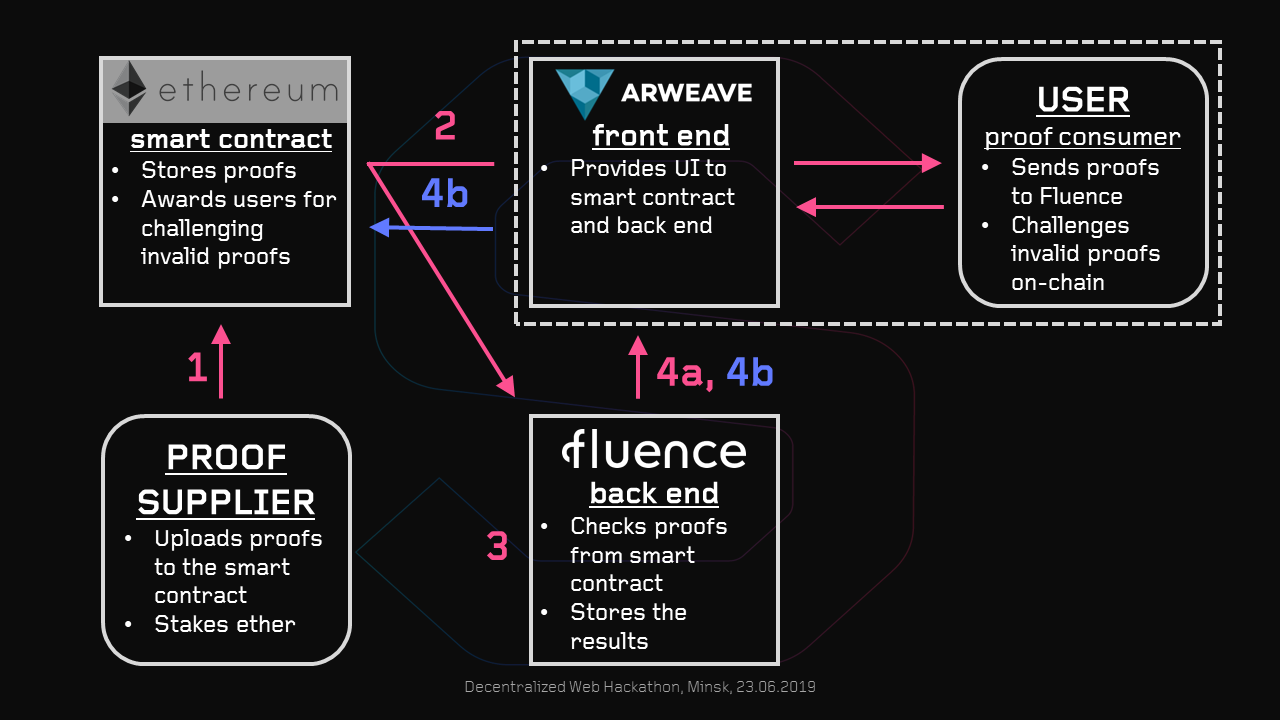2.6 KiB
LAZY SNARK: trustless off-chain zk-proof verification.
Abstract
In Ethereum, it is expensive to check zero-knowledge proofs on-chain. So, we propose to use Fluence to do heavy-lifting off-chain and only go on-chain to challenge incorrect proofs. Our project should help exisiting Ethereum projects that rely on zk-proofs to achieve privacy, scalability, and security.
Why
Let us say, there is a project that needs to verify zk-proofs in Ethereum smart contract. The problem is that zk-proof verification is a heavy computational task and thus costs a lot of gas. As a result, checking proofs on-chain is expensive, and is susceptible to network congestion.
What
We suggest checking proofs on Fluence instead. This option does not has gas problem. Thus, it is much cheaper. Also, it won't consume all the gas in the block. Besides, it is trustless and the results of the checks are public.
How it works
The process includes the following entities:
- Ethereum smart contract that stores (data, proof) pairs and implements on-chain proof verification. In case the proof is not correct, the smart contract rewards the user who challenges the invalid proof with ether.
- Proof supplier who uploads (data, proof) pairs to the smart contract. The proof supplier stakes ether to the smart contract. In case the proof supplier provides an invalid proof, the proof supplier is punished: a part of the stake is given to the one who chellenged the proof as a reward.
- Fluence back end that implements off-chain proof verification. It also stores proof verification results.
- Ethereum project user aka proof consumer. The user checks whether the proof supplier has provided valid proofs and challenges invalid ones using smart contract to get a reward.
- Arweave front end. The user performs all the actions via the front end. Also, proof results from the Fluence back end are displayed in the front end.
Here is the workflow:
- The proof supplier uploads (data, proof) to the smart contract.
- The user takes (data, proof) from the smart contract and sends it to the back end.
- The back end checkes the proof.
- a. If the proof is valid, it is stored by the back end with TRUE flag. Other users can see it in the front end and will not check this proof again.
- b. If the proof is invalid, it is stored by the back end with FALSE flag. The user challenges this proof in the smart contract. In that case the user is sure that the proof is FALSE and thus the user will get the reward.
To better understand the workflow, please review the scheme.
Benefits
юзкейсы
